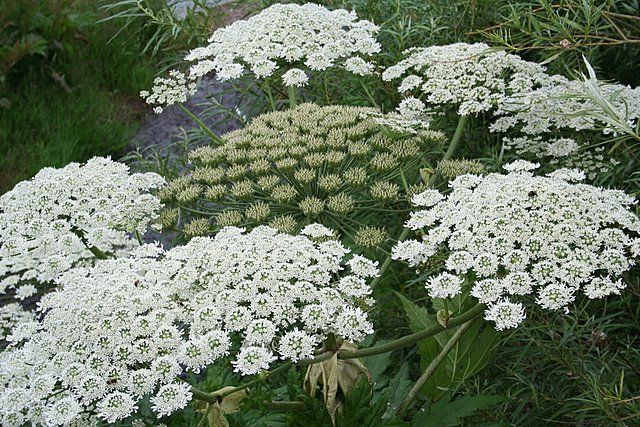County officials fear weed causes permanent blindness, scars from one sap

The state health department, township and county officials fear a plant which was prevented to spread in a search-and-destroy policy in 1998, as its threats were discovered recently in the Michigan wilderness in the United States, according to reports. The dangerous plant, called giant hogweed, has a sap capable of causing permanent blindness and scars to people with just skin contact, experts said.
The Calhoun County Public Health Department in the state has issued a warning for all the residents living near Battle Creek, the area where it was found, to avoid the said plant. The giant hogweed has sap on its leaves, roots, flower heads, seeds and stem hairs that can burn skin when the area of contact is exposed to the sun.
The Michigan Department of Agriculture & Rural Development stated on its Web site that the giant hogweed is considered “a public health hazard that ranks up there higher than poison ivy, poison oak and poison sumac in respect to its potential to harm humans.” Experts stated the effect of the sap will occur after 48 hours of contact with bare skin and is comparable to other poisonous plants found in the wilds.
In addition, the Michigan State University Extension cautions the people could not notice the plant easily. The giant hogweed “can be difficult for the outdoor enthusiast to identify,” officials said.
The plant has dark red or purple spots and bristles on a green stem, and a white flower that looks like the Queen Anne’s lace, which may confuse people. The Queen Anne’s lace, unlike the poisonous giant hogweed, is a wild, edible and nutritious flowering plant, according to Edible Wild Food.
Prior to the discovery, several people had been victims of the giant hogweed, according to reports. One of the victims was Marcie Kirkup, who told KYTV that she has experienced having blisters, swollen nose and rashes on her face within 24 hours after she had pulled six weeds while on her way to work.
The poisonous weeds are also found in several parts of US, such in Maine, Massachusetts, Connecticut, New York, Pennsylvania, Michigan, Illinois, North Carolina, Washington state and Oregon, according to the U.S. Department of Agriculture. However, people in the United Kingdom have also encountered the giant hogweed, with reports where it appears to be a much more a widespread problem.
In a city in England, according to the Telegraph, five youngsters had burns from the sap of the plant this summer. The newspaper stated one of the victim’s has an arm left with permanent scars, and a 10-year-old girl might need skin implant.
In the past, the State of Michigan has already engaged into a search-and-destroy policy toward the plant in 1998, and to date, the health department, with township and county officials will continue to monitor the site for years to come, according to Detroit Free Press.
Contact the writer at feedback@ibtimes.com.au




















